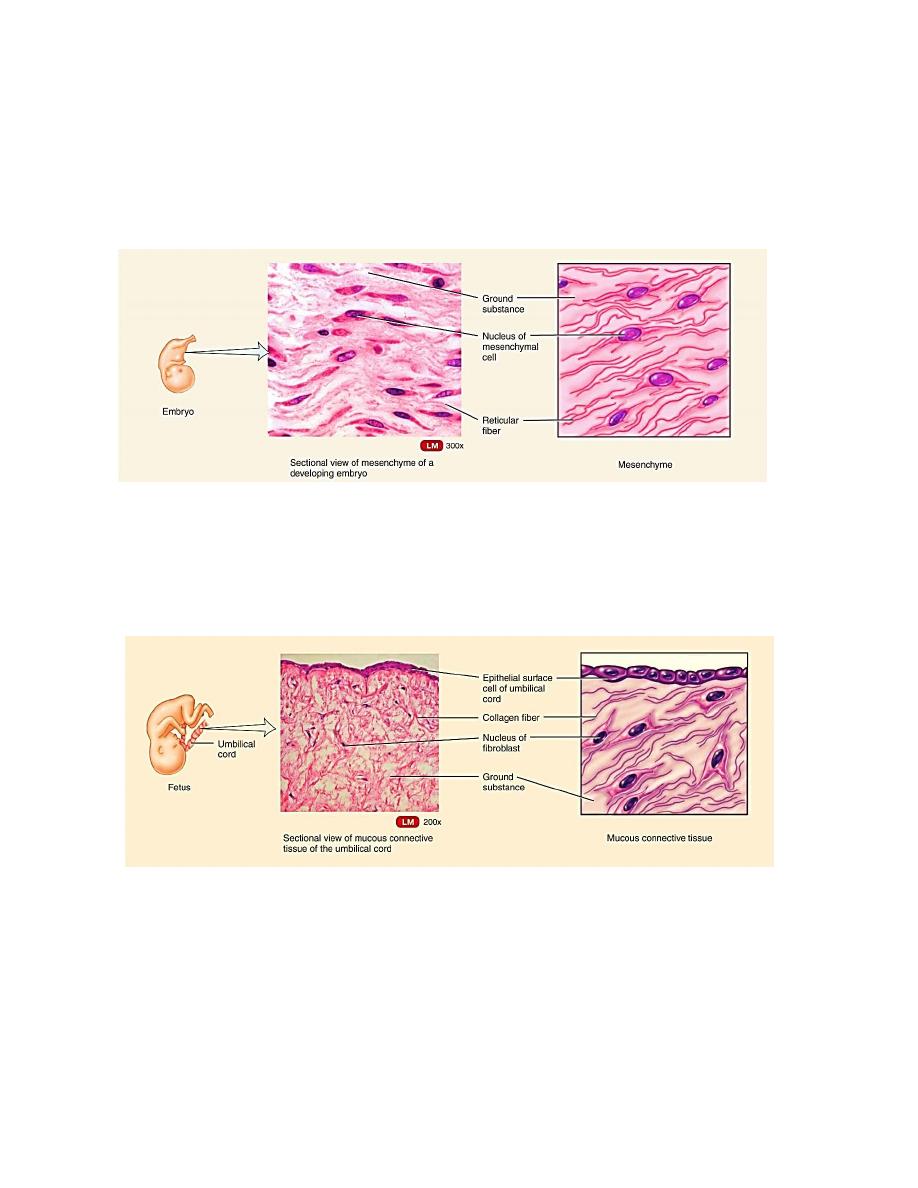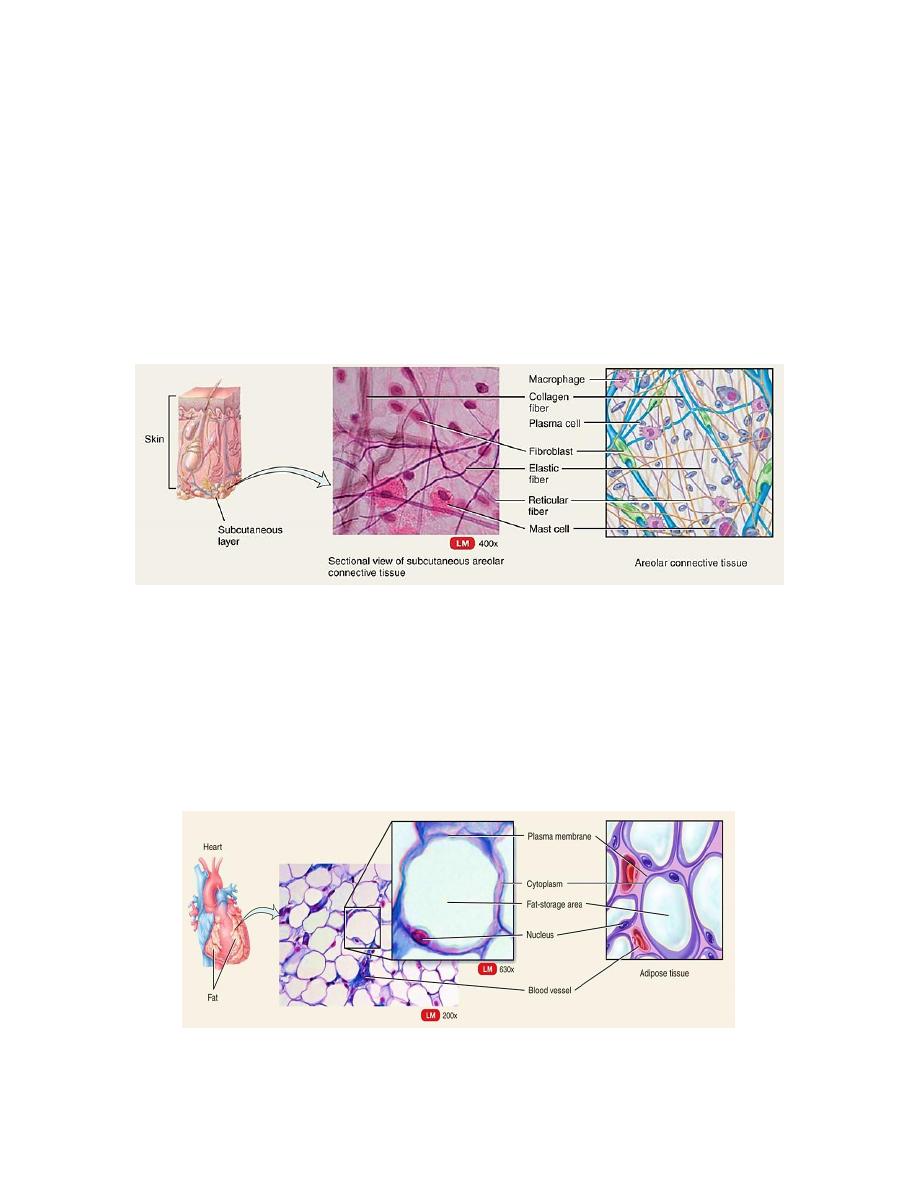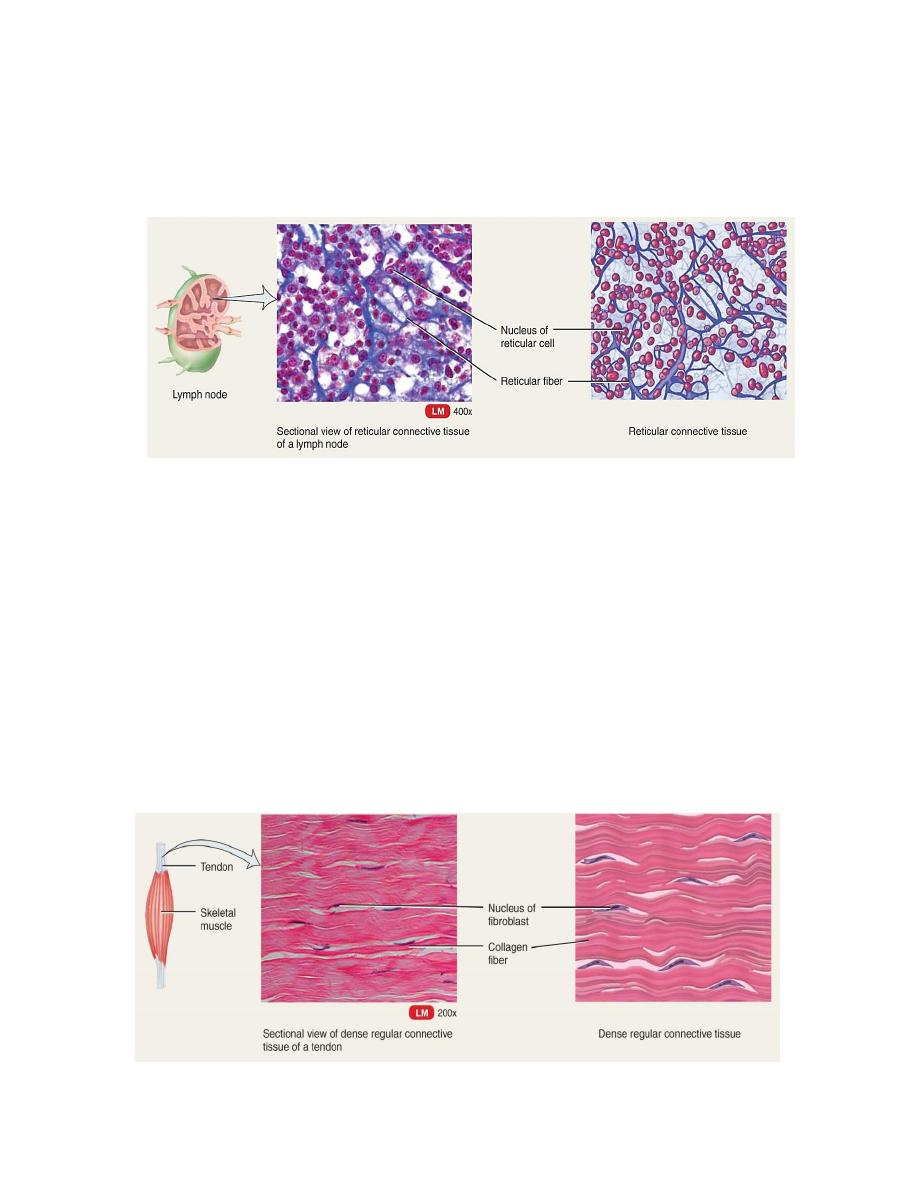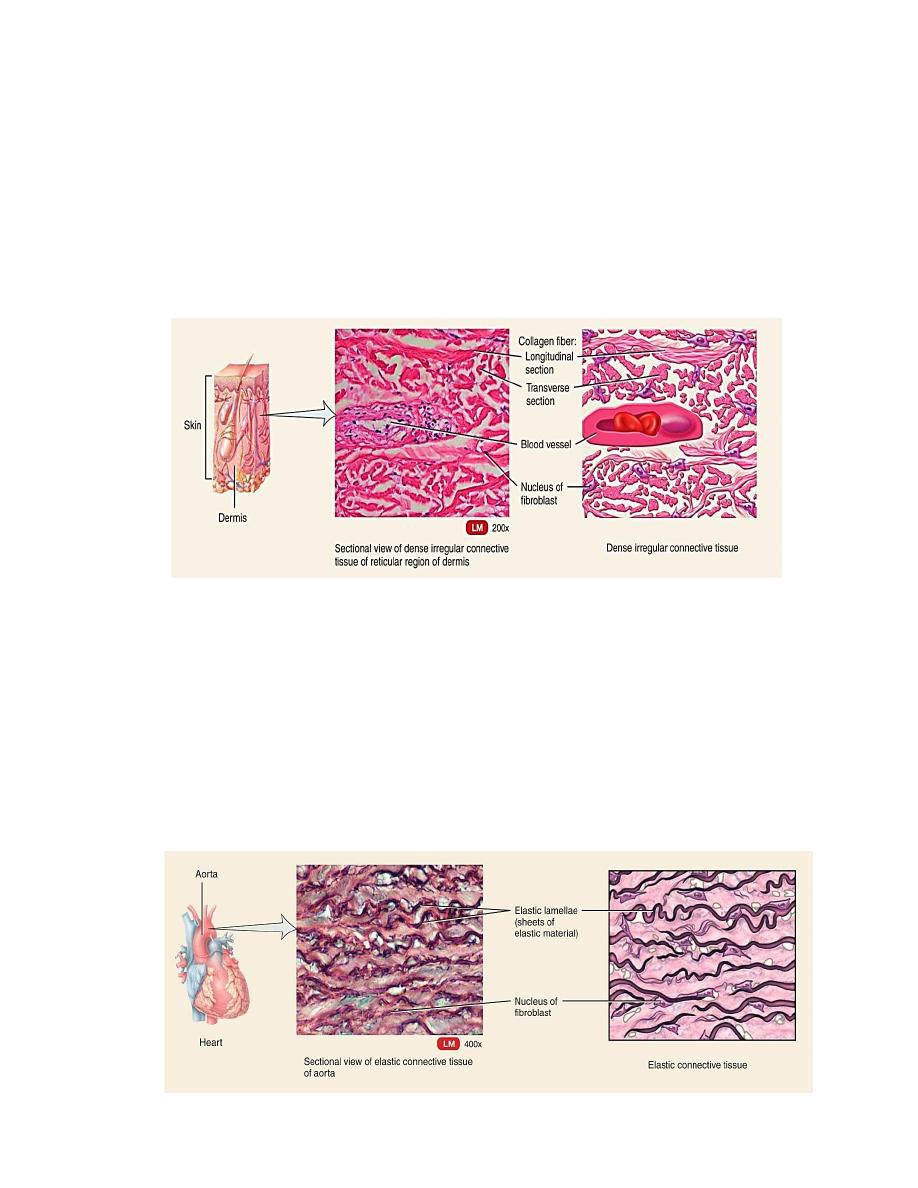
1
Lec.5 Biology
Histology
Classification of Connective tissue
Connective tissue classification is based upon three structural
characteristics of the matrix:
(1) The types of fibers
(2) The type of ground substance
(3) The structural arrangement.
According to these characteristics of the matrix, connective tissues are
classified into:
I. Embryonic connective tissue:
1) Mesenchymal connective tissue (developing embryo & fetus)
2) Mucus
connective tissue (umbilical cord)
II. Connective tissue proper:
A. Loose connective tissue
1) Areolar tissue
2) Adipose tissue
3) Reticular tissue
B. Dense connective tissue:
1) Regular dense connective tissue
2) Irregular dense connective tissue
3) Elastic connective tissue
III. Specialized connective tissue:
1) Bone
2) Cartilage
3) Blood

2
I. Embryonic connective tissue
1)
Mesenchymal connective tissue: is the connective tissue of embryo,
consists of mesenchymal cells in a gel – like amorphous ground
substance containing scattered reticular fibers.
2) Mucous connective tissue: it is found in umbilical cord, it contains
fibroblasts, few macrophages and some lymphocytes. The ground
substance is soft and jelly like containing fine collagenous fibers.
II. Connective tissue proper
A. Loose connective tissue
Loose connective tissue is characterized by having a loose arrangement of
fibers. It includes the following three tissues:

3
1) Areolar Connective Tissue
Areolar connective tissue is the most widespread connective tissue of the
body. It is used to attach the skin to the underlying tissue. It also fills the
spaces between various organs and thus holds them in place as well as
cushions and protects them. It also surrounds and supports the blood vessels.
The fibers of areolar connective tissue are arranged in no particular pattern
but run in all directions and form a loose network in the intercellular
material.
All three fibers (collagenous, elastic and reticular) and several
kinds of cells, including fibroblasts, adipocytes and cells of the immune
system, are embedded in a semifluid ground substance.
2) Adipose Connective Tissue
The cells of adipose (fat) tissue are characterized by a large internal fat
droplet, which distends the cell so that the cytoplasm is reduced to a thin
layer and the nucleus is displaced to the edge of the cell. These cells may
appear singly but are more often present in groups .
When they accumulate
in large numbers, they become the predominant cell type and form adipose
(fat) tissue. Adipose is widely distributed in the body, especially
under skin
and around internal organs.

4
3) Reticular tissue:
It consists of reticular cells, these are star in shape, has long cytoplasmic
extensions and the network of reticular fibers formed by them. Reticular
tissue is located in the liver, lymph nodes, spleen, and the bone marrow.
B. Dense Connective Tissue
Dense connective tissue is characterized by having a dense arrangement of
fibers. It includes the following three tissues:
1) Dense Regular Connective Tissue
The matrix of dense regular connective tissue consists of dense bundles of
parallel (regular arrangement) collagenous fibers. The bundles of
collagenous fibers are surrounded by a small quantity of ground substance.
The structural cells are called fibroblasts and are found in rows between
bundles of collagenous fibers.
Dense regular connective tissue is mostly
found forming tendons.

5
2) Dense Irregular Connective Tissue
The matrix of dense irregular connective tissue consists mostly of
irregularly arranged collagenous fiber bundles with a small quantity of
ground substance. An irregular arrangement means that the bundles (groups
of collagenous fibers) are interwoven in many directions . Fibroblasts are
dispersed among the bundles of collagenous fibers.
Tissue locations include
the dermis (skin) , connective tissue sheets surrounding muscles (fasciae)
and some organs such as the liver and lymph nodes.
3) Elastic Connective Tissue
Elastic connective tissue may be considered a special type of dense
regular connective tissue. This is because its matrix consists mostly of
densely arranged elastic fibers, not collagenous fibers. Scattered
collagenous fibers are located in small spaces among the elastic fibers.
Fibroblasts are found throughout the tissue.
Elastic connective tissue
locations include the vocal cords, walls of large arteries, walls of
respiratory airways, and ligaments.

6
